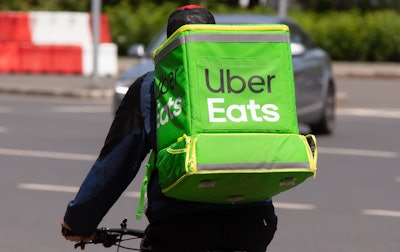
The online food delivery industry plays a unique role in bringing together several technological advancements, companies and processes with the goal of providing convenient, quick and cheap food delivery. Frost & Sullivan predicts sector revenues will rise from $82 billion in 2018 to a staggering $200 billion in 2025 at a compounded annual growth rate of 14 percent as a result of increasing global penetration, strategic mergers and acquisitions, and adoption of new technologies such as artificial intelligence, AR/VR, drones and autonomous vehicles.
North America has the highest concentration of online food delivery companies. Homegrown Uber Eats has the highest presence globally, operating in more than 670 cities. However, in certain countries, local players dominate only their home markets, such as Meituan Dianping in China, Swiggy in India and iFood in Brazil.
Frost & Sullivan's latest research, Future of Global Online Food Delivery Services Market, analyzes the global online food delivery industry and discusses the current market scenario, key trends, innovative strategies, and competitor profiles, and provides a region-wise revenue forecast for the sector through 2025. For further information on this analysis, visit: http://frost.ly/3uo
Asia has been the largest market for online food delivery globally, passing $45 billion in revenue in 2018. China contributed over 73 percent of that share, with India a distant second at 13.2 percent. The Asian market will surpass $100 billion by 2025. Europe is expected to grow at a CAGR of 14.5 percent between 2018 and 2025, which is higher than any other region.
Market participants can explore the growth opportunities in:
- Pursuing continuous onboarding of restaurants and other food providers to expand selection for customers and broaden reach.
- Adding features such as payment wallets, subscription offers and crafted meal options to ensure customer retention and spur innovation.
- Improving penetration in growing markets with a large population, such as India, Asia-Pacific, and Africa, which is critical to future success owing to their large segment of millennials and a burgeoning middle class.
- Exploring the concept of ghost restaurants under their own brands or licensing through third-party companies, as this reduces overhead expenses significantly.






















